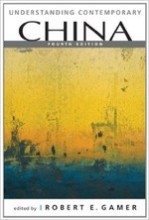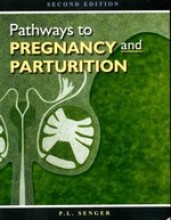Summary: Understanding Contemporary China | 9781588268440 | Robert E Gamer
- This + 400k other summaries
- A unique study and practice tool
- Never study anything twice again
- Get the grades you hope for
- 100% sure, 100% understanding
Read the summary and the most important questions on Understanding contemporary China | 9781588268440 | edited by Robert E. Gamer.
-
1 Introduction
This is a preview. There are 30 more flashcards available for chapter 1
Show more cards here -
In 1992, Deng Xiaoping gave a speech in which he said: 'It doesn't matter whether the cat is black or white, so lang as it can catch mice'. What did this signal?
That the economic reforms which had before been limited to special zones along China's coast would now be allowed throughout China; modern buildings, highways and shopping centres were created, but the contrast between cities and rural villages became stark. -
In 2002 the contrast between cities and rural villages had decreased. What was the main reason for this?
The reforms expanded to every corner of the nation. Because of the road improvement program, the peasants which were once isolated could get access to modern urban commerce. -
China is developing fast, some wonder if it is happening too fast. Name three downsides of the developments.
For example:- Decline of traditional culture and family and community life
- Pollution
- Safety concerns (after the crash of two bullet trains)
-
What is the main reason that China (a communist country) can immerse in free markets the way it does?
Many Chinese people are living overseas and China's prosperity has depended upon the investment of overseas Chinese; their prosperity in turn depends on China's prosperity. This interdependency explain why China can immerse in the free markets; those markets are embedded in the social structure of the widely dispersed Chinese community. -
How does China contri=bute to widespread pollution?
Many factories and building roads does contribute to the arts's problem of pollution -
1.1 Creative Tensions
This is a preview. There are 5 more flashcards available for chapter 1.1
Show more cards here -
Which tensions does Understanding Contemporary China highlight?
- Confucianism and both petty and modern capitalism
- Confucianism, Christianity and communism
- Popular culture and formal traditions
- Regions and the capital city
- Cities and the rural hinterland
- The heartland and its global outreach
-
What would China need to do to sustain its growth?
- increase the technical skills of its workforce,
- raise wages to expand domestic consumption,
- increase its efficiency,
- reduce corruption,
- enforce business contracts.... and cooperate with other nationson efforts to reduce worldwide economic and political stability.
-
What helped the Chinese people cultivate their inner personal lives while conforming to the rigid social conventions associated with Confucianism and family enterprises?
Daoism, Buddhism and popular forms of entertainment. -
How is it possible that China can contribute to global capitalism without being absorbed by it?
It has a disciplined social core. People who have migrated to Chinese cities or even to the other end of the earth, are welcome to return to their home regions, keeping rural social bonds and safety nets alive. Even when divided by ideology, politics or distance, families and clans deriving from the same villages have habits of cooperation to further enterprises by sharing capital, labor, markets and special connections. -
What should China do if it wants to continue to grow at the same rate?
It must find new ways to adapt to global capitalism by:- Increasing the technical skills of the workforce
- Raising wages to expand domestic consumption
- Increasing efficiency
- Reducing corruption
- Enforcing business contracts
- Cooperating with other nations on efforts to reduce worldwide economic and political instability.
- Higher grades + faster learning
- Never study anything twice
- 100% sure, 100% understanding
Topics related to Summary: Understanding Contemporary China
-
Introduction - New Challenges
-
China: A Geographic Preface - Space
-
China: A Geographic Preface - Regions
-
China: A Geographic Preface - The Natural Landscape
-
The Historical Context - Political Patterns of the Past
-
Chinese Politics
-
China's Economhy - China's Dynamic Growth in Perspective
-
China's Economhy - China's Traditional Mixed Economy
-
China's Economhy - From Revolution to Reform
-
China's Economhy - The Successful Transition to a Market Economy
-
China's Economhy - Is High Growth Sustainable?
-
China's Economhy - Overcoming Challenges and Constraints
-
China Beyond the Heartland - Overseas Chinese
-
Population Growth and Urbanization - City and Countryside in History
-
Population Growth and Urbanization - Population and Food
-
Population Growth and Urbanization - City and Countryside Today
-
Population Growth and Urbanization - Ethnic Minorities
-
China's Environmental Problems - Contemporary Environmental Problems
-
Family, Kinship, Marriage, Sexuality - Family Structure
-
Family, Kinship, Marriage, Sexuality - Marriage
-
Family, Kinship, Marriage, Sexuality - Family Relations
-
Family, Kinship, Marriage, Sexuality - Sexuality
-
Family, Kinship, Marriage, Sexuality - Ethnic Minorities
-
Women and Development - The "Traditional" Portrait of Chinese Women
-
Women and Development - Women in the Late Nineteenth and Early Twentieth Centuries
-
Women and Development - Women's Status After the Communist Revolution
-
Women and Development - Women and Economic Reform
-
Women and Development - Women and Politics
-
Women and Development - Conclusion
-
Literature and Popular Culture - Writing: The Human Pattern
-
Literature and Popular Culture - Singers and Poets
-
Literature and Popular Culture - Storytellers and Novelists
-
Literature and Popular Culture - Priests and Playwrights
































